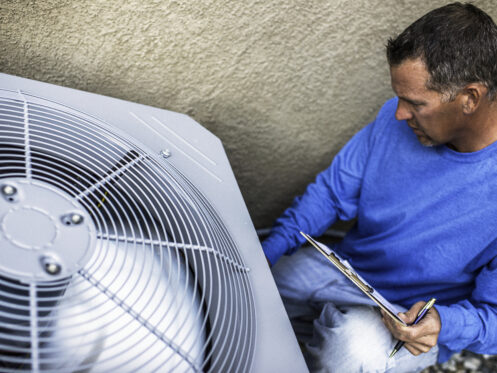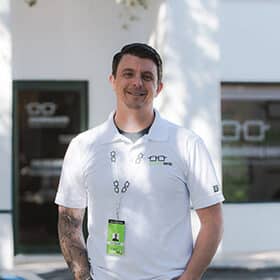All of the HVAC equipment in your Cape Coral, FL, home requires professional maintenance at least once annually. Heat pumps, air conditioners, and furnaces last longest with regular, yearly service. Annual maintenance is key for preserving HVAC equipment manufacturer warranties and promoting optimum levels of efficiency.
However, it’s also important to schedule routine cleaning and maintenance for your HVAC air ducts. Frequently overlooked, these features affect indoor air quality (IAQ), home energy bills, and home comfort. Read on to learn what professional air duct cleaning and maintenance entails and how often you should schedule these services.
HVAC Air Duct Maintenance: What It Is and Why It’s Essential
Our technicians check air ducts for loose connections, structural damage, and other air leaks during routine heater and AC maintenance. These assessments are critical for optimizing HVAC performance. They help limit energy waste and promote acceptably high IAQ. However, they do not constitute actual HVAC air duct maintenance.
Professional air duct maintenance is a separate service that homeowners should schedule in addition to HVAC appliance maintenance. It includes:
- HVAC air filter replacement
- Measurements of subcool, superheat, and amp draw
- As-needed evaporator and condenser coil cleaning
- Blower motor and blower fan inspections
- Air register, vent, and grille cleaning
Our HVAC technicians check for adequate duct sealing and insulation, crushed or perforated duct sections, sagging air ducts, loose connections, and more. While visual inspections help identify damage in visible or exposed air ducts, testing can pinpoint problems in concealed ducts hidden behind drywall and other building elements.
How Professionals Clean HVAC Air Ducts
While you should have your HVAC air ducts inspected and maintained annually, you don’t need to schedule air duct cleaning as frequently. According to the United States Environmental Protection Agency (EPA), homeowners should have these features professionally cleaned periodically. This includes after:
- The ingress of wildfire smoke
- Mold remediation
- In-duct pest infestations
- Major home renovations
HVAC air duct cleaning clears out dust, dander, pollen, and countless other allergens and contaminants that air filters don’t capture and retain. It also extracts blown-off filter debris, odor-causing pathogens, trapped carpet and textile fibers, and more.
The National Air Duct Cleaners Association (NADCA) suggests scheduling these services regularly. According to NADCA, the best way to protect your home heating and cooling equipment, IAQ, and resident health is by scheduling air duct cleaning every two to three years. If your HVAC air ducts are relatively new or if your indoor air quality is consistently high, our technicians recommend scheduling duct cleaning just once every three to five years.
These services optimize airflow throughout HVAC systems to limit equipment stress and improve overall efficiency. They play an important hand in preventing airflow-related problems like short cycling, overheating, and icing. They also prevent trapped debris from breaking free and reentering the indoor air.
Components Treated During Professional Air Duct Cleaning
Whether made from flexible plastic, sheet metal, or fiberglass, your air ducts are only one part of your home’s air delivery system. Thus, in addition to cleaning, sanitizing, and deodorizing actual air ducts, professional HVAC air duct cleaning also addresses:
- Blower motors and blower fans
- Air registers, vents, and grilles
- Evaporator and condenser coils
- Air intake valves
- Heat exchangers
Mechanical Agitation
Not all the built-up debris in your air ducts is loose, dry, particulate matter. As dirty air ducts increasingly impede airflow in HVAC systems, humidity regulation declines—rising levels of in-duct moisture cause sticky, tacky waste to accumulate on interior duct walls. Mechanical agitation uses specialized tools to loosen these trapped materials for removal.
During mechanical agitation, compressed air, air whips, and mechanized brushes scour the interior of air ducts clean. These treatments also remove the thick, lint-like build-ups of particulate matter on and behind air vent covers and grilles.
Vacuum Suction
Also known as power vacuuming, vacuum suction leverages strong suction to extract loose elements. It’s an excellent technique for eradicating the dust and other particulates that find their way into ducting during building renovations, nearby construction, and dust storms.
With air volume capacities as high as 15,000 cubic feet per minute, truck-mounted vacuums can extract lint, hair, textile and carpet fibers, pet fur, dander, dust mites, and more. Vacuum suction is frequently employed to treat ducting after major pest infestations. It effectively removes the feces, wings, exoskeletons, and other detritus that common household pests leave behind.
Negative Air Pressure
Frequently paired with mechanical agitation, negative air pressure extracts air from ducting while creating a tight seal. Although it works much like power vacuuming, it has a far lesser likelihood of causing trapped particulate matter to become airborne.
Steam Cleaning
Steam cleaning is a rarely used duct cleaning method that sanitizes, deodorizes, and cleans air ducts in one fell swoop. HVAC technicians use steam-emitting wands to clean ducts, vents, grilles, blower motors, and indoor air handling units. However, new heat pumps, air conditioners, and furnaces don’t hold up well to these high-moisture treatments.
Steam cleaning can cause the electronic elements in modern HVAC systems to malfunction or fail. An HVAC technician might recommend steam cleaning if you have older heating and cooling equipment or aging air ducts that could be damaged by aggressive mechanical agitation or high pressure.
Chemical Sanitization
If you’ve had problems with rodents in your air ducts, you may wish to add chemical sanitization to your duct cleaning. Not only will it remove the bacteria and other pathogens that these pests have left behind, it will also break down the oily pheromones that rats and mice rub onto duct walls. Chemical sanitization additionally addresses in-duct problems with mold and mildew.
Sometimes, small animals wander into HVAC air ducts and become trapped. Dying animals often enter ductwork when looking for enclosed, private spaces to finish out their last days or hours. If you’ve recently removed a carcass from your ducting, you’ll want your HVAC company to finish the job by applying the appropriate sanitizing chemicals.
Deodorization
HVAC air duct deodorization is never used as a standalone duct cleaning treatment. Instead, it’s typically employed with mechanical agitation or negative air pressure and just after chemical sanitization. Deodorization completely removes rodent pheromones, mold odors, and the putrid odors left by decaying carcasses and pest waste.
We help residents of Cape Coral, FL, optimize their indoor air quality and protect their heating and cooling equipment with top-notch HVAC air duct cleaning and maintenance services. We also provide exceptional AC, furnace, plumbing, drain, and sewer services. The best form of duct cleaning varies from home to home, so it’s essential to find the right solution for your specific needs. Schedule a visit with a Nerd to learn more and see what’s best for you. If it’s time to have your ductwork cleaned, give Plumbing & Cooling Nerds a call today!

